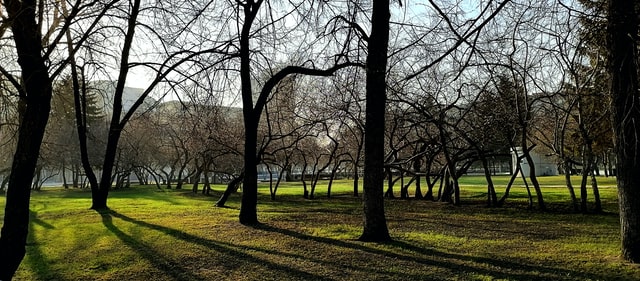Do Tree Talk To Each Other
Like humans who communicate over the Internet, trees use a vast underground network… of fungi! What a great example of symbiosis.
Imagine a forest full of trees. Each tree stands, solitary, with its own trunk, its own branches, and its own leaves. But did you know that trees are linked by a vast and complex underground network?
What does this network consist of? Of mushrooms! According to scientists, almost all plant species have relationships with fungi that live in the soil. These fungi can connect the roots of different trees (and other plants) to create what is called a mycorrhizal network.
A mycorrhizal network can influence the survival, growth, health, and behavior of trees associated with it. In addition, trees use their network to communicate and to share resources. Some scientists therefore call it “the Internet of trees.”
How does a mushroom network work?
Many types of fungi grow mainly below the surface of the soil, where they deploy filaments called hyphae. Together, these filaments form a network called a mycelium. The filaments can colonize (live among) the roots of trees and other plants.
Fungal filaments can interact with tree roots in two ways. In an ectomycorrhizal network, the filaments cover and propagate in the roots between cells. In an endomycorrhizal network, the filaments pierce the roots and enter their cells.
Fungi and trees live in symbiosis, a close, long-term relationship that benefits two organisms. Trees produce food, in the form of sugar, by photosynthesis. They share this sugar with the mushrooms. In return, fungi share with trees the nutrients they get from the soil, most of which are phosphates and nitrates. This type of symbiosis is called mutualistic symbiosis, because both species benefit from it.
How can trees share resources?
Fungi are not the only organisms that share resources with trees. Trees also share resources with each other! They use the mushroom network as a means of transportation. For example, seedlings (young plants) that are in the shade cannot grow very quickly because they get their energy from light. But large trees can give them a boost by sharing nutrients through the fungal hyphae.
Different tree species can also share nutrients. For example, several studies have examined the relationships between Douglas fir (a conifer) and paper birch (a deciduous tree). In the spring and fall, when birch trees are leafless, Douglas firs are an important source of carbon and nitrogen. But in the summer, when the birches are taller and their foliage is provided, they in turn become an abundant source of carbon and nitrogen. Through osmosis, nutrients from trees at the highest concentrations will be transferred to those with the lowest. As for Douglas Fir and Paper Birch, this will happen seasonally!
However, some plants take advantage of the generosity of others without giving anything in return. For example, there are species of orchids that do not photosynthesize. Rather, they steal all the nutrients they need from neighboring plants!
How can share resources help trees defend themselves?
Diseases and insect infestations can spread quickly in a forest; and they can be fatal for trees! Studies show that trees can use the fungus network to help their neighbors in the event of an attack. For example, when a tree is attacked, it releases certain chemicals. These cross the mushroom network and warn other trees of danger. This early warning allows other trees to better protect themselves.
The warning messages could encourage these trees to modify their morphology (shape and structures), their physiology (functions) or their biochemistry. For example, a plant could alter its biochemistry by increasing the levels of toxins and repellents in its tissues to deter pests. It could also change its biochemistry by producing volatile organic compounds that attract the natural enemies of a given pest.
A study shows that weakened trees can even pass resources, like nitrogen and phosphorus, to their neighbors before they die. Thus, beneficiary trees are better equipped to fight disease or infestation.
Prime Tree Service Company, located in Lodi, specializing in the trimming, modeling, root removal, tree cutting, tree removal, tree planting, and professional garden design of all kinds of trees Refurbished.
Prime Tree Service Company can help you create a beautiful, healthy, and safe outdoor living environment. In addition, cutting trees, moving trees, planting trees and professional garden design will help protect the value of your property.
Contact us today: (209) 297-3338
Continue reading about “The Benefits Of Tree Trimming“

